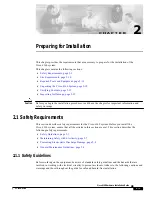
17
4.0 Carrying out Measurement
4.1 Preparations and Safety Measures
1. Set range selection switch to desired function prior to connecting
test probes to UUT.
2. Prior to switching to a new function or measurement range always
disconnect measurement leads from UUT.
3. Only use the multimeter in dry and clean environments. Dirt and
humidity lower insulation resistances and can lead to electrical shock
in case of higher voltages.
4. Only use multimeter within specified measurement ranges.
5. Prior to use always verify instrument for correct functioning (e.g.
with known voltage source, see also DIN VDE 0105, Part 1).
6. Ensure that measurement leads are in perfect condition.
7. Only use fuses of same type and characteristics. Short-circuiting the
fuse holders is prohibited.
4.2 Voltage Measurement
Attention !
Never apply more than 600 V AC/DC at input sockets. Exceeding
these threshold values could lead to instrument being damaged or
personnel injuries.
1. Set measurement range switch (2) to AC or DC voltage measure-
ment (V=, V
;
or V). Always select highest measurement range for
unknown voltages and select lower measurement range, if required,
until maximum resolution is achieved.
Attention !
Disconnect test probes from UUT prior to selecting different
measurement range.
AC and DC greater than 100 mV voltages are automatically determined
with model 9005 and selected accordingly.*
The measurement range with the highest
resolution is automatically selected in
“automatic mode“. If desired, manual
selection is possible by using button (8) in
V=/
;
range.
* For mixed voltages always the voltage
(AC or DC) with greatest amplitude will be
displayed.
2. Connect black test lead to “COM“ socket
and red test lead to “V,
V
, mA“ socket.
3. Connect test probes to UUT. Read
measurement value displayed.
Connection Diagram for
Voltage Measurement
UUT
!
















































